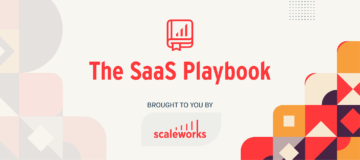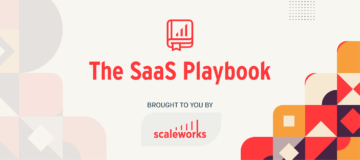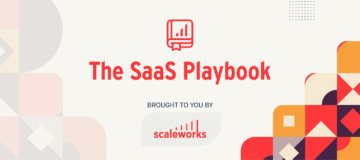Welcome back to The SaaS Playbook, a bi-weekly rundown of the top articles, tactics, and thought leadership in B2B SaaS. Not a subscriber yet?
💸 SaaStr founder Jason Lempkin had an interesting piece on picking the right ICP to target for your business. He believes that in startup’s early days (sub $1MM ARR), the customer segment split is surprisingly often 40/40/20: 40% big enterprises, 40% SMEs, and 20% micro businesses. At the $1MM ARR mark he suggests doubling down on one segment rather than being a tool for everyone (different segments require different GTM, so focus helps), and urges founders to consider the enterprise – if you are selling a solution. The distinction between a solution and tool is that a solution solves a larger pain point (for example, billing) rather than one specific problem (so in relation to billing, dunning). His point is really that by offering solutions, you can justify charging significantly much more for your product.
🏋️♂️ If you are looking to start a new venture, you will find no shortage of inspirational, “pump up” articles to get your entrepreneurial juices flowing. Unite Labs CEO, Maximilian Schulz, isn’t a fan of them, and takes the Elon Musk view that “if you need inspiring words (to do something), don’t do it”. After recently leaving Unite, he gave an honest view of his time with the business and how he battled the uncertainty which comes with operating a startup. Two interesting bits he would tell his former self: be passionate enough about the problem you are solving to work on it for the next 5 – 10 years, and to deeply understand the market you are entering so you can evaluate whether taking capital is a must, or a mistake.
📹 When Albert Kozlowski started working on Birdslate, an asynchronous video platform for teams, the idea was fresh and there were no similar tools in the market. Video was booming so he and his co-founder elected to go straight for an MVP rather than spending time to validate the idea first, which turned out to be a mistake. Despite getting lots of VC interest, customers were not biting, and the team made the tough decision to call it quits just a few months after their initial release. The story is a great reminder that even if macro trends point towards a need for your startup, the only way to truly validate an idea is countless conversations with prospective customers.
🌳 There is a science to conducting customer interviews, and if you don’t believe me, Stanford even has a course on it in their entrepreneurship program. There are a few key principles though for those who don’t have time for a course, starting with asking open ended questions. Open ended questions remove an opportunity to bias your interviewee and can result in answers you probably weren’t expecting. But that does not mean you have to stick totally to the script, it’s good to ask for details and clarification frequently to dig up more information. For example, if someone tells you that migrating their data to your platform was difficult, you should ask them “what do you mean by difficult” to get to the root of the problem.
- SEO Powered Content & PR Distribution. Get Amplified Today.
- Platoblockchain. Web3 Metaverse Intelligence. Knowledge Amplified. Access Here.
- Source: https://thesaasplaybook.substack.com/p/identifying-the-right-icp-for-your
- articles
- B2B
- BEST
- billing
- business
- businesses
- call
- capital
- ceo
- charging
- Co-founder
- conversations
- Customers
- data
- Early
- Effective
- Elon Musk
- Enterprise
- entrepreneurship
- First
- Focus
- founder
- founders
- fresh
- good
- great
- How
- HTTPS
- idea
- information
- interest
- Interviews
- IT
- Key
- Labs
- Leadership
- Macro
- mark
- Market
- medium
- months
- MVP
- offering
- open
- operating
- Opportunity
- Pain
- platform
- Product
- Program
- SaaS
- Science
- SMEs
- So
- Solutions
- Spending
- split
- stanford
- start
- started
- startup
- Story
- tactics
- Target
- tells
- thought leadership
- time
- tool
- tools
- top
- Trends
- VC
- venture
- Video
- View
- WHO
- words
- Work
- years







